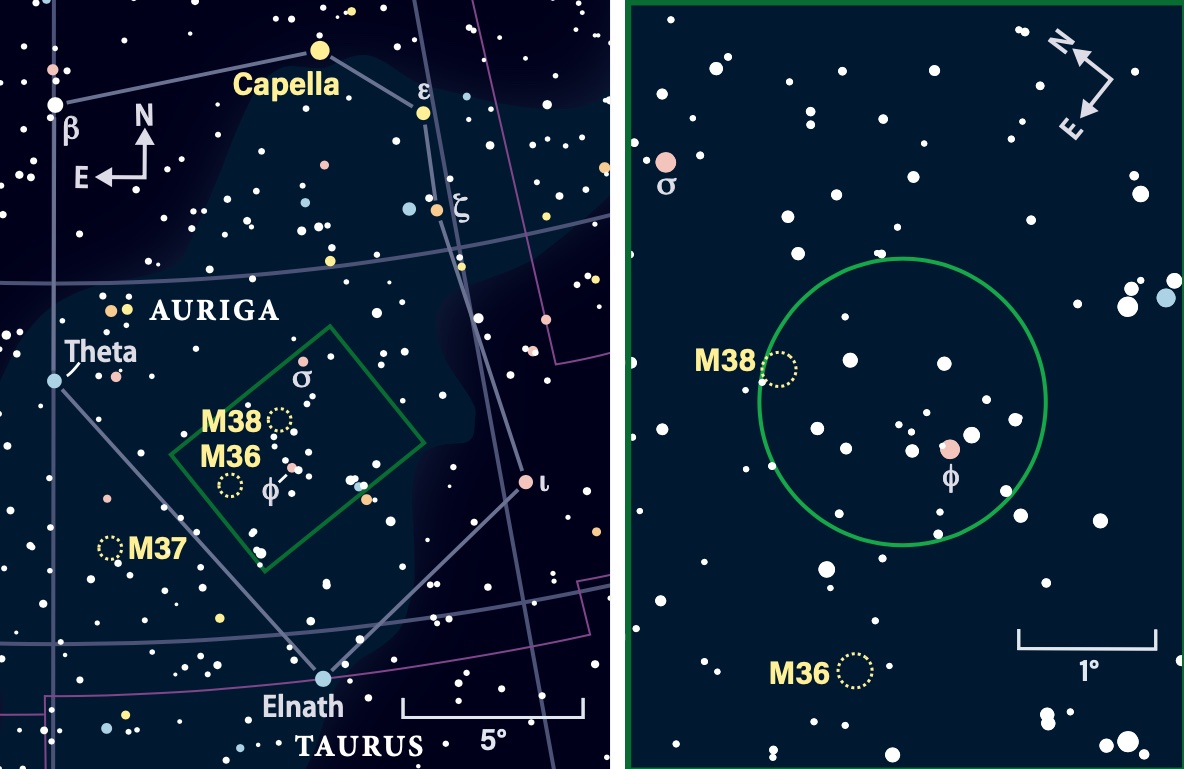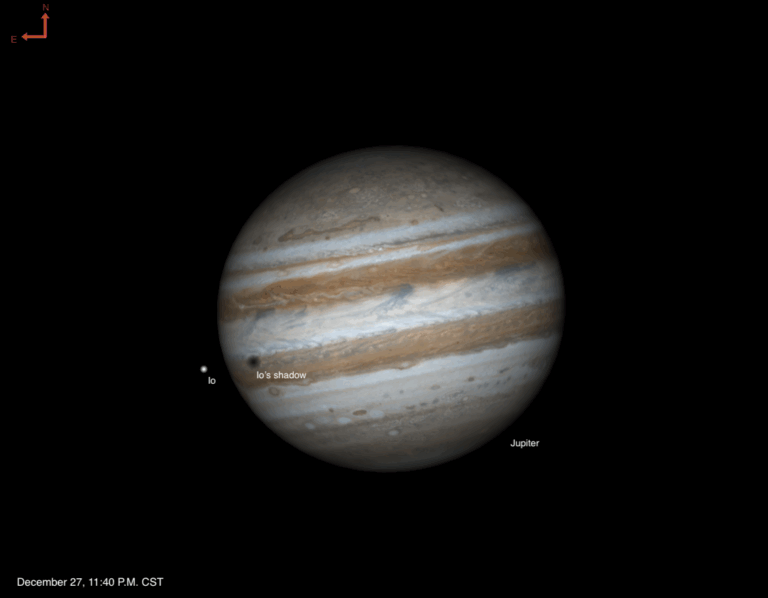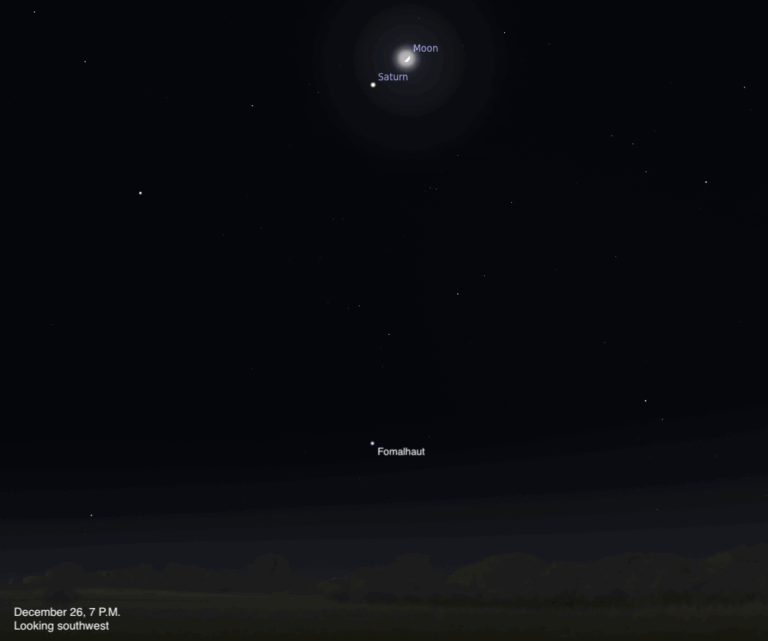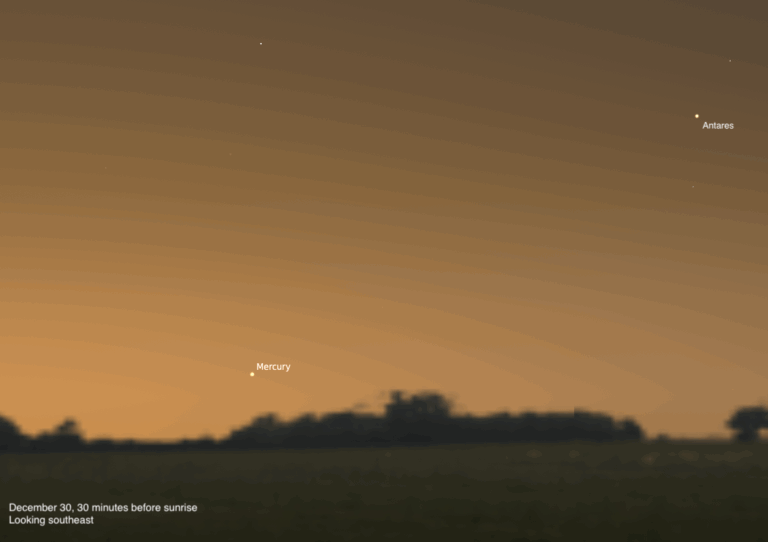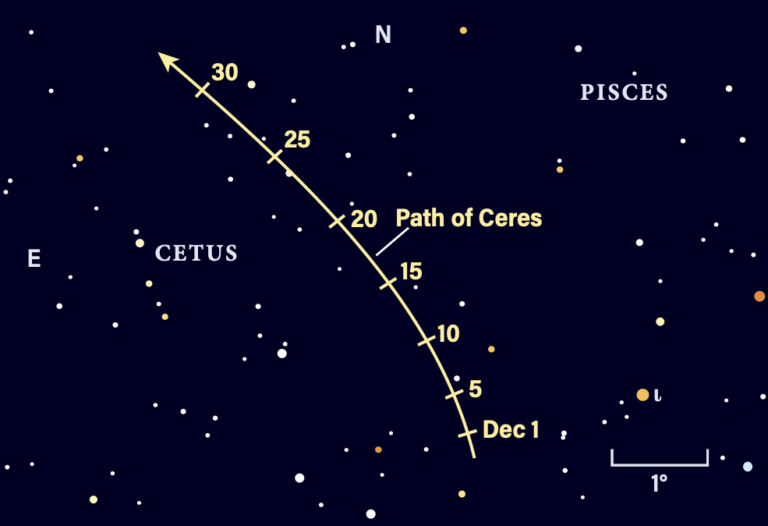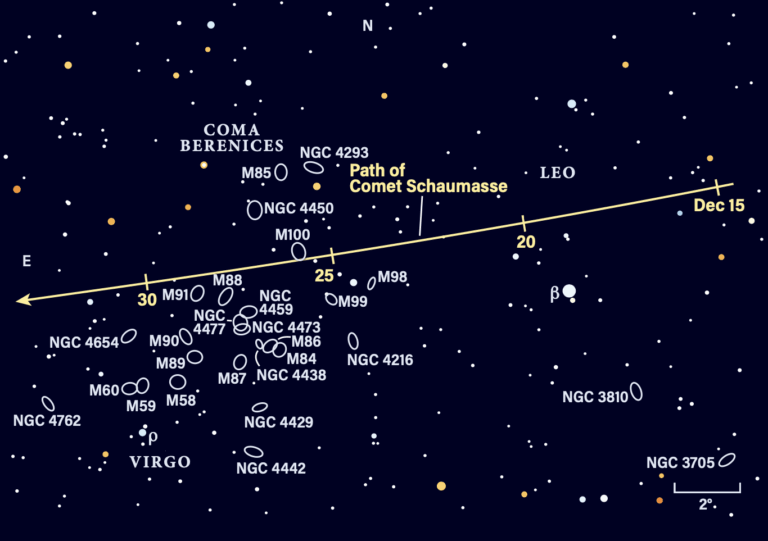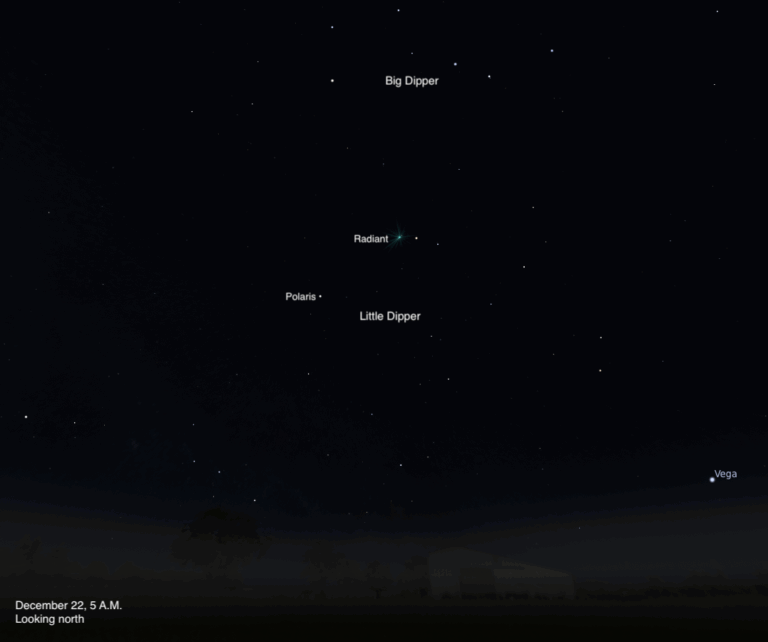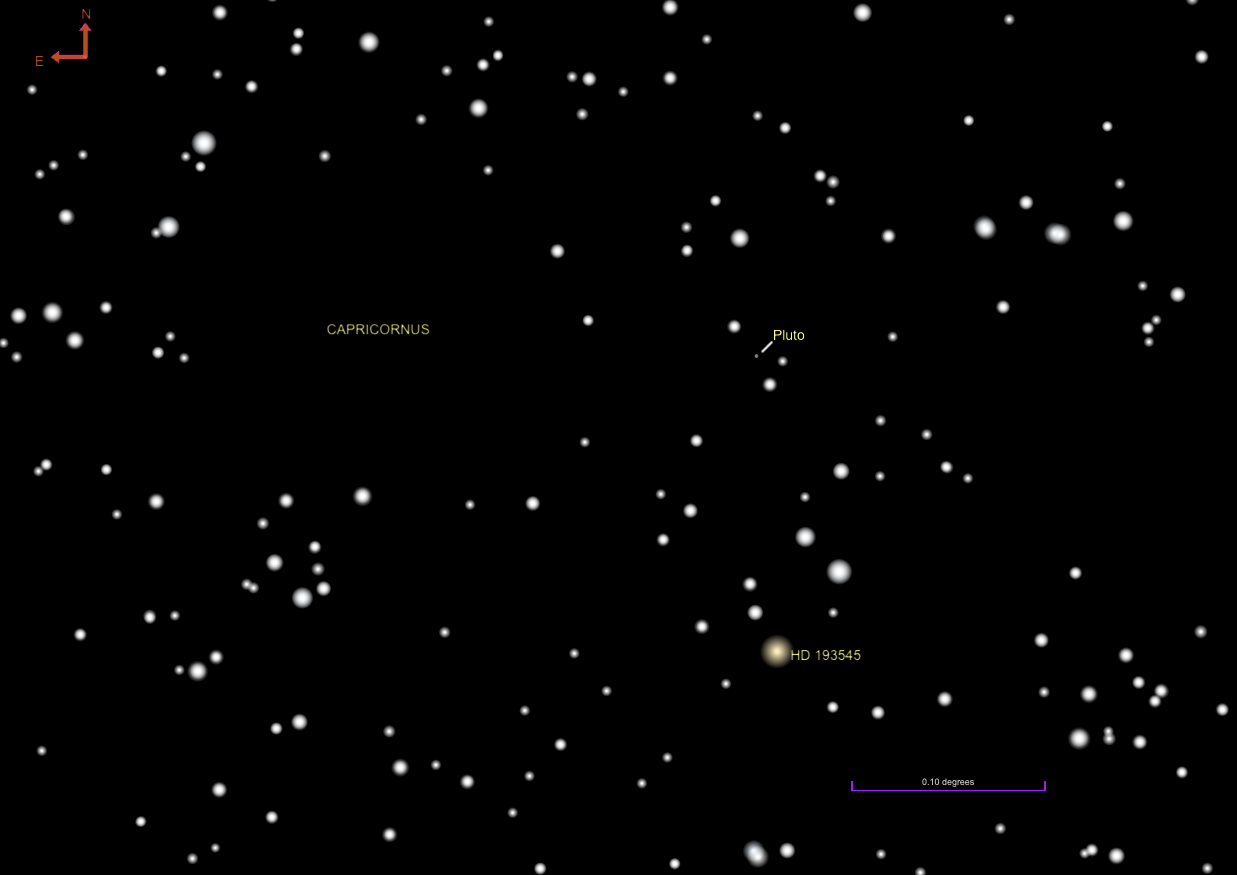
Key Takeaways:
- Pluto reaches opposition at 3 A.M. EDT, presenting an optimal viewing opportunity due to its apparent brightness and the absence of moonlight.
- Visual observation requires a telescope with an aperture of at least 11 inches, given Pluto's magnitude of 14.4; astrophotography offers improved detection capabilities using smaller telescopes.
- Pluto's location is specified near Sigma Capricorni in Capricornus, with detailed positional information relative to nearby stars provided to aid in identification.
- Confirmation of Pluto's identification can be achieved by taking a series of images over several nights to observe its westward movement against the backdrop of stationary stars, utilizing the characteristic shift of approximately 4 arcseconds per day.
Pluto reaches opposition at 3 A.M. EDT. Opposition is when objects typically appear at their best, and with no Moon in the sky, observers with large scopes and little light pollution may be able to visually snag the dwarf planet.
Pluto may be at its best, but it is still magnitude 14.4. According to Astronomy Associate Editor Michael Bakich, you’ll want an 11-inch scope — and preferably larger — to capture it visually. However, photography can boost your chances — many of today’s newer (and smaller) imaging smartscopes can also nab you Pluto, so give it a try!
Pluto rises around 8 P.M. local daylight time and is highest just after midnight. Late this evening you can find it about 20° high in the south from the Midwest, in far western Capricornus. It lies about 4.2° south of 5th-magnitude Sigma (σ) Capricorni and is just 10’ north of an 8th-magnitude field star, HD 193545. The dwarf planet sits roughly equidistant between two similarly bright field stars this evening, one magnitude 13.4 and the other magnitude 13.5. Remember, Pluto is still a full magnitude fainter than either of these.
Your best bet will be to use the go-to function on your scope, then look for the “star” that appears slightly “flat” and grayish in color between the two brighter pinpoints of light. At this distance, Pluto’s tiny disk spans less than 1”, so it may not appear circular to the eye.
One of the best ways to identify Pluto is to take a series of images over the course of three to four nights and look for the object that has moved. Pluto moves relative to the background stars at a rate of about 4” per day, so you’ll need a few days to spot the difference. It is currently moving west, so watch for the way the line of three lights north of Sigma Cap elongates into a triangle over time. The westward-moving dot pulling out of line is Pluto.
Sunrise: 5:53 A.M.
Sunset: 8:20 P.M.
Moonrise: 6:34 A.M.
Moonset: 9:16 P.M.
Moon Phase: Waxing crescent (1%)
*Times for sunrise, sunset, moonrise, and moonset are given in local time from 40° N 90° W. The Moon’s illumination is given at 12 P.M. local time from the same location.
For a look ahead at more upcoming sky events, check out our full Sky This Week column.

